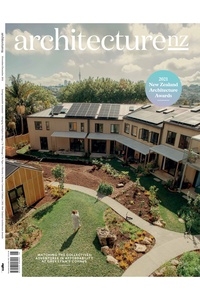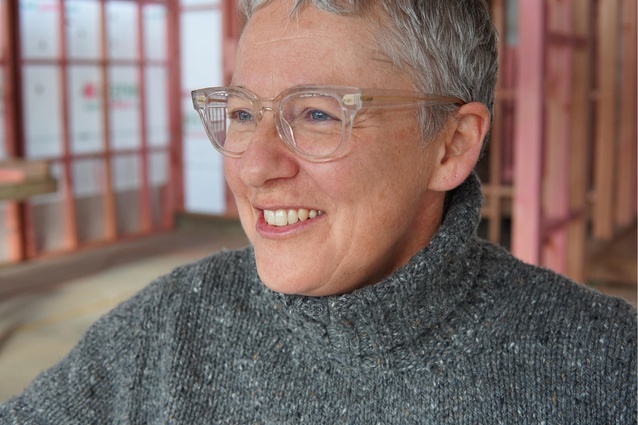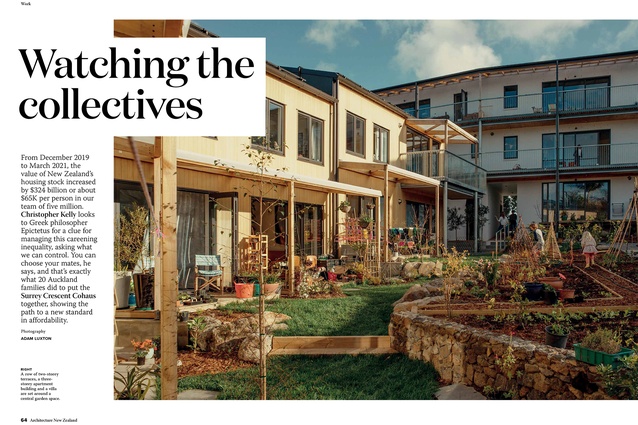Housing is homemaking in New Zealand
In response to Architecture NZ’s recent review Watching the Collectives, architect and 2021 Te Kāhui Whaihanga NZIA Sir Ian Athfield Award for Housing recipient Lisa Webb says architects need to speak more loudly in the debate around this country’s housing crisis.
Six years ago, we were looking for a house. More specifically a home. This is when I was learning how many rights renters have in this country. (Not many. A rented house in New Zealand is not a home.) My colleagues, Thom and Helle of Studio Nord, invited us to a meeting about an idea they had to build a community together with a Danish concept called co-housing. Could we be a Cohaus family? We talked about some big ideas in that meeting. Altruism, community, the loneliness epidemic, social division, and the crisis of consumption: the ‘radical’ idea of sharing some stuff. We talked, mostly, about the conundrum that is the housing crisis.
My husband and I walked away from the first meeting knowing three things:
1. It would take a long time
2. It would take compromise
3. It would include giving up our cars
We were a hard ‘no’.
1. I didn’t want to rent that long.
2. Co-design and group decision making is frustrating and requires a selflessness that I wasn’t sure I could access for such a personal thing as my home.
3. And, if I am being truly honest, I thought “take my Alfa keys out of my cold, dead fingers”.
We took the more obvious route for an architect with ambition to explore their own ideas. We built our own house, on a piece of land that was too small for the developers. As it happens, I have been rewarded by our community with a great honour for this house. I was proud to be the recipient of last year’s Sir Ian Athfield Award for Housing. I see the hard work and sacrifice it represents. I know I wrestled with some interesting ideas and thought a lot about what Jack Manning told me was ‘Architecture with a capital A’. I am grateful that our small suburban family home is seen as an example of how to do in-fill housing well. But I also know I made a lot of mistakes, learnt a lot more (too late) and, I am often told, hit the topical jackpot. I take the win with honour. I was thinking a lot about housing. More specifically, the crisis. How to build, well, on a smaller footprint. How to approach less desirable sites. How to use less, better; sustainability. I believe that these are issues for architects, or at least issues that architects could help resolve for the greater good. So, where are our voices on this front? Who is contributing most to the current public discourse and debate about housing? Why are the voices of our community heard in whispers, or not at all? We leave a void filled by politicians, developers, economists and concerned citizens. In my day-to-day life, I meet people who think, or suspect, that architects are a bunch of self-interested dorks who make things harder for everyone else. We do not seem to be presenting ourselves to the wider public as useful agents of change.
There has been a wealth of projects recently that have something to contribute. Many architects have been thinking well, and cleverly, and compassionately about housing the less privileged, or just the moderately average or slow to get on the housing ladder. Off the top of my head, I think of many of the Kiānga Ora developments, the regeneration taking place in East Tamaki , the tiny houses, the apartment blocks, the terraces, the Christchurch reconstruction, the My Whare project, the Auckland City Mission. Compare and contrast the architectural development at Hobsonville with any hill on the way out of Auckland you choose not to look at. We clearly have a lot of useful things to say. Why are we not a loud voice in public debate?
Sometimes I lay awake at night wondering when the tipping point will be. What percentage of people who realise they will never have a home will it take to trigger a change? And what kind of change would that be – better or worse, legislative and slow or fast and brutal? If you are sitting happily in your exponentially appreciating house, talk to someone who doesn’t own property, someone under 35 – some of them are pretty angry, and they have a right to be. What I see is that most of us in the middle age/middle class are all simultaneously worried about three things. House values, the prospect of townhouses going up next door, and our children’s future. So, we are stuck, and flounder on. There is no clear leadership because there is no solution that does not inflict pain and trigger retribution. A conundrum that no HB pencil can resolve.
This is why I was disheartened by the recent review of the completed Cohaus. From where I sit, my friends made the harder choice, and they will not be honoured by their architecture community for it. They subverted their own architectural primacy in search of something else. A built question. How do we live well? How can we build communities? What are the most important things an architect does and how do they do it? What is the point? Is any of it for the greater good? Or are we all just feathering nests? They offer up their experience as a contribution to a debate about a really big problem. Is it possible to rethink some fundamentals, and could this be useful to the wider debate? Why aren’t we talking about this?

How does an architect review the Cohaus – this strange, unnerving testament to the architect as facilitator not master? Where is the big idea? The grand vision the artist-architect offers up to dazzle the regular person. As a group, we tend to privilege ideas and grand vision over collaboration and ownership and the messiness of being human. We abhor washing lines, fridges, dishwashers, even gutters. We turn our gaze away from the traces of domesticity. We don’t always consider the needs of our clients enough. We expect them to pay for the genius regardless. Some see the art of designing a home as a responsibility, some see it is an artistic gift, best received intact. Just like the artisans of old, we serve at the pleasure of the Court. The meals are always better at the top table. It is natural to want to sit there, easier too. And who wants to be a worker, or a professional, when you can be an artist?
But what if the artisan so wants to be the artist, that they forget they have a job to do?
Why do the 19 households of the Cohaus not gaze aspiringly over a Piet Oudolf-inspired meadow? How did the architects let the families plant a jumble of untidy vegetables and leave a grass track for the kids to play on? Does it matter that the owners paid less for an apartment with that land than a standard apartment without? That they have a home in an unaffordable neighbourhood? That they are now part of a community? That their kids now have somewhere to play, and someone to play with – and a school they can belong to? We ask why the architects privileged accessibility over views and built the gathering room where the youngest and less able can find it.
This is precisely why nobody is listening to us and that is what we should be talking about. Louder.
Lisa Webb
Architect
The Cohaus review from Architecture NZ Nov/Dec 2021 can be read here.











